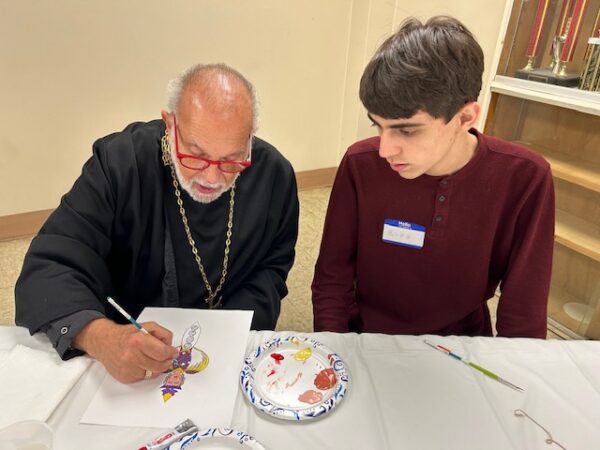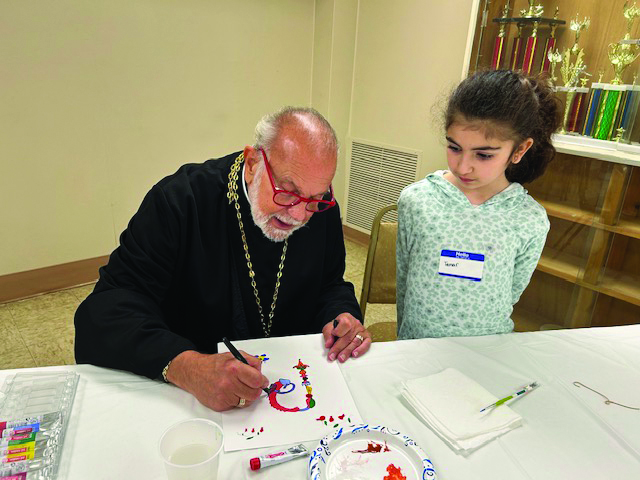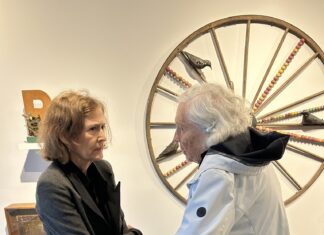By Robin Garabedian
Special to the Mirror-Spectator
WORCESTER — It’s hard to deny that there’s a lot of ugliness in the world right now. More specifically, with the news out of Armenia, it can be hard not to feel that grief, fear, and pain are the true essence of being Armenian. One recent program presented a different, positive point of view. I, and many others from Worcester and the surrounding area, had the opportunity to attend Father Garabed Kochakian’s youth workshop, “The Art of Armenian Lettering,” on May 11.
Our connections to each other are also through our language and alphabet – and how those things have been deployed in a uniquely Armenian form of calligraphy.
Armenian calligraphy has a long and rich history. For nearly 2,000 years, from the time of the adoption of Christianity in Armenia in 301 AD to the invention of the printing press in 1440 AD in Germany, all books were handwritten. Before the technology of printing arrived in Armenia, the monks copied into Armenian letters the Bible and other sacred and secular texts. They would paint the first letter of each line in opening paragraphs with unique shapes known as trchnagir (birds), dzaghgagir (flowers), gentangir (animals), tsgnagir (fish), and even martagir (people). Monks would mix their own paints with vinegar, egg yolks and pulverized powder from ores and vegetation, then use goose and duck feathers for pens, create brushes to paint from sable or kitten fur, and make paper by stretching and cutting lamb skin.
Kochakian is one of many experts knowledgeable on this topic, an iconographer himself, and has offered numerous painting workshops for both youth and adult audiences where he guides participants in reproducing their own versions of this medieval art form of lettering.











